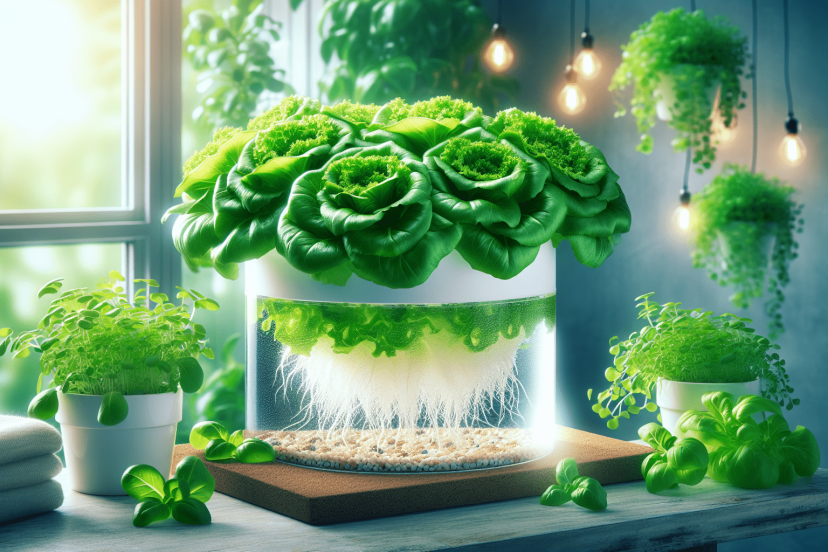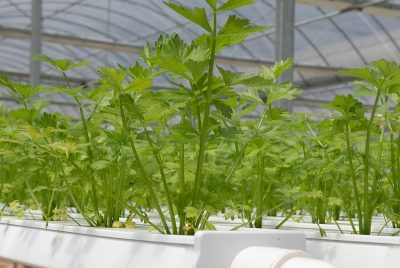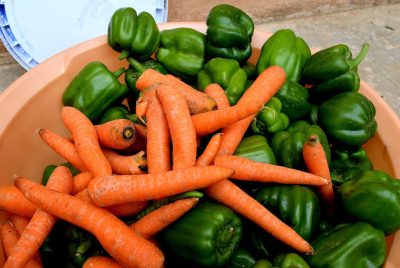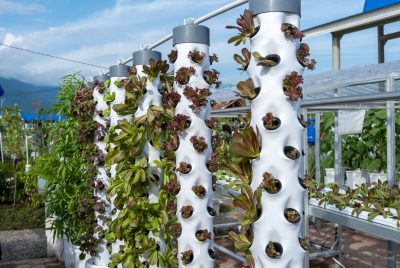Growing Hydroponic Lettuce: A Beginner’s Guide
Have you ever thought about how fresh, crispy lettuce could be just a few steps away from your kitchen? If you’re curious about growing your own hydroponic lettuce at home, you’ve come to the right place! This guide will lead you through the process, making it easy and enjoyable.
What is Hydroponics?
Understanding hydroponics is the first step to your successful lettuce-growing adventure. Hydroponics is a method of growing plants without soil, using mineral nutrient solutions in an aqueous solvent. This technique allows for faster growth and greater yields compared to traditional soil gardening. Isn’t that exciting?
Benefits of Hydroponic Gardening
The advantages of hydroponic gardening are numerous. Let’s take a closer look at what makes this method appealing for growing lettuce:
Space Efficiency: Hydroponic systems can be set up in small spaces, making them perfect for apartments or homes with limited garden area.
Water Conservation: Hydroponics uses significantly less water than traditional soil gardening since water is recirculated throughout the system.
Faster Growth: Without soil to carry disease, plants focus their energy on growth, which can lead to quicker harvest times.
Less Maintenance: Hydroponic systems require less weeding and pest control, allowing you to enjoy gardening without the extra hassle.
Consistent Growing Conditions: You can monitor and control the environment, ensuring your lettuce has the ideal conditions to thrive regardless of outdoor weather.
Getting Started with Hydroponic Lettuce
You’re probably wondering what you need to begin your hydroponic lettuce journey. Don’t worry! It’s simpler than you might think. Here’s a step-by-step guide on how to get started.
Choosing Your Hydroponic System
Several hydroponic systems can be used for growing lettuce. Here’s a breakdown of the most common types:
| System Type | Description | Pros | Cons |
|---|---|---|---|
| Deep Water Culture (DWC) | Plants are suspended in nutrient-rich water. | Simple setup, quick growth. | Requires careful oxygenation. |
| Nutrient Film Technique (NFT) | A thin film of nutrient solution flows over plant roots. | Efficient nutrient use. | Can be challenging to set up correctly. |
| Ebb and Flow (Flood and Drain) | Water floods the grow bed, then drains away. | Versatile and effective. | Requires a bit more setup and maintenance. |
| Wick System | A simple setup using wicks that draw nutrient solution to the plant roots. | Easy to set up. | Limited to smaller plants. |
For beginners, the Deep Water Culture is often the most straightforward option. It offers a balance of simplicity and efficiency, making it a great choice for your first hydroponic lettuce.
Selecting Hydroponic Lettuce Varieties
Next, you’ll want to choose which types of lettuce to grow. Here are some popular varieties that work well in hydroponic systems:
- Romaine: Crisp and sturdy, Romaine is great for salads and sandwiches.
- Butterhead: Soft, tender leaves make Butterhead a favorite for gourmet dishes.
- Leaf Lettuce: Quick to grow and very versatile, Leaf Lettuce adds color to any meal.
- Iceberg: Though a bit slower to grow hydroponically, Iceberg is iconic for its crunchy texture.
Setting Up Your Hydroponic Lettuce System
Once you’ve selected your system and lettuce variety, it’s time for setup. Follow these steps to create your hydroponic lettuce garden:
Gather Your Supplies: You’ll need a hydroponic setup (DWC, NFT, etc.), a growing medium (such as rock wool or clay pellets), nutrient solution, seedlings or seeds, a water pump (if applicable), and air stones for oxygenation.
Prepare Your Growing Medium: If using growing blocks or pellets, soak them in the nutrient solution to prepare them for planting.
Plant Your Seeds or Seedlings: If starting from seed, plant them in your chosen medium and ensure they have adequate moisture and light. If using seedlings, gently place them into the medium, ensuring minimal disruption to their roots.
Fill Your Reservoir: If applicable, fill your reservoir with nutrient-rich water, ensuring the proper pH levels (around 5.5 to 6.5) for optimal growth.
Set Up Lighting: If you’re indoors, invest in grow lights with the appropriate spectrum for plant growth. Position them to remain 12-24 inches above the plants, adjusting as they grow.
Oxygenate the Water: Use air stones or pumps to keep the water oxygenated, promoting healthy root development.
Maintain Temperature and Humidity: Lettuce thrives best in temperatures between 60°F (15.5oC) to 70°F (21.1oC) and humidity around 50%. Monitor these to create the ideal environment.
Nutrient Management for your Hydroponic Lettuce
Your plants need nutrients to thrive, and hydroponics allows you to provide them directly. Understanding how to manage nutrient levels and pH will ensure your lettuce grows strong.
Nutrient Solutions
You can purchase pre-mixed nutrient solutions, or you can mix your own using hydroponic nutrient concentrates. Here’s an example of essential nutrients that lettuce needs:
| Nutrient | Function | Source |
|---|---|---|
| Nitrogen (N) | Promotes leaf growth | Urea, ammonium nitrate |
| Phosphorus (P) | Supports root and seed development | Rock phosphate, bone meal |
| Potassium (K) | Regulates water and nutrient movement | Potassium sulfate, greensand |
| Calcium (Ca) | Aids in cell wall structure | Calcium nitrate |
| Magnesium (Mg) | Crucial for photosynthesis | Epsom salt |
pH Levels
Maintaining the right pH level is crucial in hydroponics. Most leafy greens, including lettuce, prefer a pH of 5.5 to 6.5. You can monitor pH levels using a pH meter or test strips. Adjusting can be done using pH Up or pH Down solutions readily available at gardening stores.
Regular Monitoring
Schedule regular check-ins for your lettuce plants. Monitor nutrient levels, pH, and water levels to keep your system in check. Making adjustments as needed will help ensure a successful harvest.
Lighting Considerations
Lighting is a pivotal aspect of hydroponic gardening, especially if you’re growing indoors. Sunlight is ideal, but grow lights can supplement or replace natural light when necessary.
Natural Light
If you have a suitable window, position your hydroponic setup there for maximum sun exposure. Lettuce generally needs around 12-16 hours of light each day.
Artificial Lighting
When using artificial lights, opt for full-spectrum LED grow lights. They mimic natural sunlight and promote healthy plant growth. Watch for signs of light stress, such as leaf curling or discoloration, which might indicate that the lights are too bright or too close.
Watering Regimen for your Hydroponic Lettuce
Hydroponics relies heavily on water management. Here’s some guidance on watering your lettuce plants.
Keeping the Roots Hydrated
In a DWC system, roots should always be submerged in nutrient-rich water. For other systems like NFT or Ebb and Flow, ensure that water levels are well managed to provide enough moisture without saturating the roots.
Frequency
Generally, you’ll need to check your water levels daily. Adjustments depend on the growth stage of your lettuce. Seedlings may need more frequent watering, while mature plants require steady moisture.
Signs of Over or Under-Watering
Understanding your plants will help you catch potential issues early on. Signs of over-watering include yellowing leaves and root rot, while under-watering often leads to wilting and stunted growth. React quickly if you notice these signs.
Pest Control
Even hydroponic systems can face challenges from pests. Being proactive about pest control will help ensure healthy growth and a bountiful harvest.
Common Pests
Watch out for pests such as aphids, spider mites, and whiteflies. These tiny invaders can cause significant damage if not dealt with promptly.
Organic Pest Control Methods
Instead of harsh chemicals, try organic methods to manage pests. Here are some effective options:
- Neem Oil: An organic pesticide that disrupts pest growth and reproduction.
- Insecticidal Soap: Effective against soft-bodied pests like aphids.
- Companion Planting: Planting herbs or flowers nearby can deter pests naturally.
Regularly inspect your plants and, if you notice any unwanted visitors, act quickly to remove them safely.
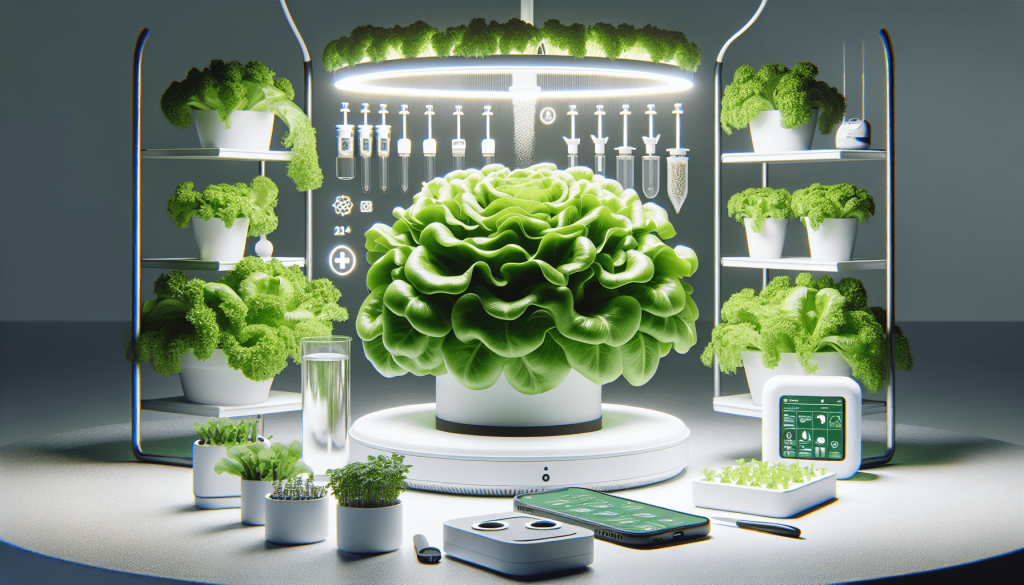
Harvesting Your Hydroponic Lettuce
As your lettuce grows, you’ll soon be ready for harvest. Knowing when and how to pick your greens is crucial for enjoying their fresh taste at its best.
Timing
Most lettuce varieties are ready for harvest within 30 to 60 days. You can start harvesting when leaves reach six inches in height but may wait for full maturity if you prefer a heartier taste.
Harvesting Techniques
Depending on your lettuce type, choose the best technique:
- Cut and Come Again: For leaf lettuces, cut the outer leaves, allowing the inner ones to continue growing.
- Cutting Heads: For varieties like Romaine or Butterhead, use a sharp knife to cut the head at the base.
Remember, harvesting in the morning, when plants are well-hydrated, can improve the taste and texture of your greens.
Post-Harvest Handling
After harvesting, rinse your lettuce leaves gently in cool water to remove any dust or residues. Store them in a sealed container lined with paper towels in the fridge for freshness.
Troubleshooting Common Issues with your Hydroponic Lettuce
Even the best gardeners face challenges now and then. If you encounter problems, here are some common issues and solutions:
Yellowing Leaves
If the leaves of your lettuce start to turn yellow, it could indicate nutrient deficiency, particularly nitrogen. Evaluate your nutrient solution and consider making adjustments.
Wilting or Browning Leaves
Wilting can be a sign of dehydration, while browning often indicates over-watering or nutrient burn. Check your watering practices and adjust your nutrient levels to remedy these issues.
Slow Growth with your Hydroponic Lettuce
If growth seems sluggish, assess your lighting, nutrient intake, and environmental conditions. Bug infestations or root issues can also hinder growth, so inspect your plants thoroughly.
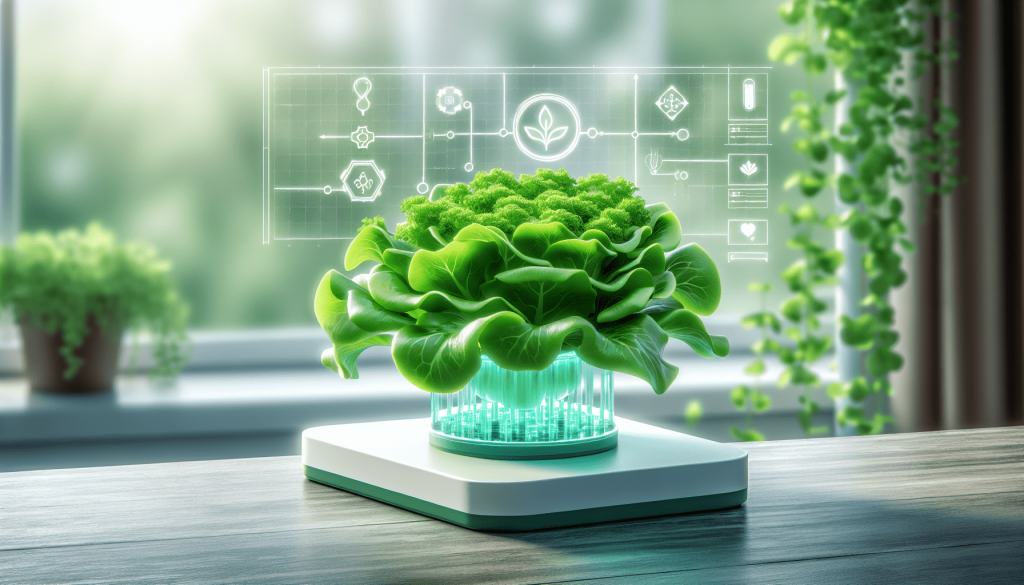
Tips for Success with Hydroponic Lettuce
To wrap up your effort in growing hydroponic lettuce, here are some final tips to help you along the way:
Research: Continue learning about hydroponics even after setting up your system. Each crop may have specific needs and nuances.
Start Small: As a beginner, focus on a small scale. Once you feel confident, you can expand your hydroponic garden.
Document Your Journey: Keep track of your progress, including what works and what doesn’t. This information can be invaluable for future growing attempts.
Join a Community: Engaging with fellow hydroponic enthusiasts online can provide support, tips, and motivation.
Don’t Give Up: Every gardener faces challenges. Persistence is key, and with each cycle, you’ll become more skilled.
Conclusion
Growing hydroponic lettuce can be a rewarding journey that brings fresh greens right from your home. With the information you’ve gained from this guide, you’re well on your way to becoming a successful hydroponic gardener. From understanding the basics of hydroponics to mastering nutrient management and dealing with pests, remember that practice makes perfect. Embrace the learning curve, and soon, you’ll find joy in harvesting your own crisp and delicious lettuce! Happy growing!

